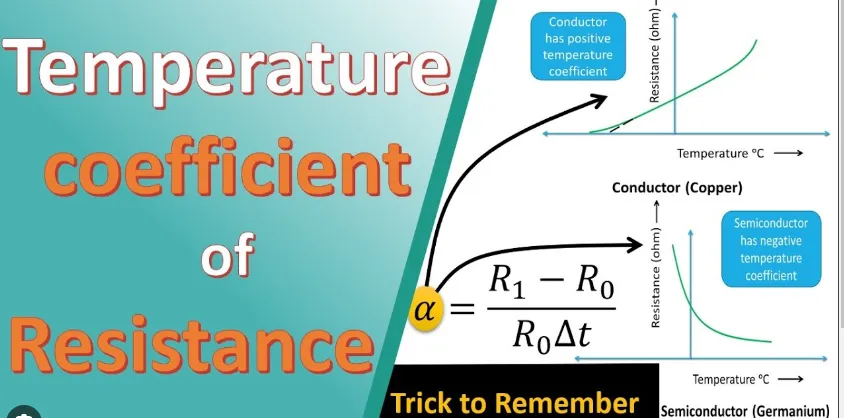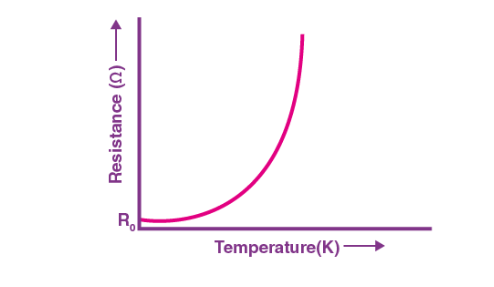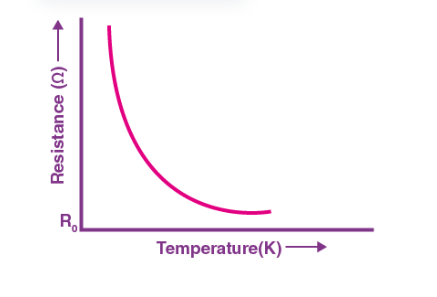Temperature Coefficient of Resistance

The temperature coefficient of resistance is an important concept in physics and engineering. It describes the magnitude of the change in resistance value as temperature changes. The temperature coefficient of resistance refers to the relative rate of change in resistance value per degree of temperature change. This concept has wide applications in circuit design, instrumentation, electronic equipment manufacturing and other fields. Understanding the concept and principle of resistance temperature coefficient can help us better understand the characteristics of resistance, thereby coping with circuit problems in various temperature environments, optimizing design solutions, and improving system stability and reliability. So, let us explore the mystery of the temperature coefficient of resistance together!
What Is the Temperature Coefficient of Resistance?
A measurement of how much a material's resistance varies with temperature is called the temperature coefficient of resistance (TCR). Ohms per degree Celsius (/°C) or ohms per degree Kelvin (/K) are the usual units used to express it.
Relation between Temperature and Resistance
For metallic parts, an increase in temperature causes free electrons to scatter more frequently. More frequent scattering reduces the electron's mean free path, causing the resistance to increase. Generally speaking, pure elements have the fewest scattering points and therefore have lower resistivity compared to alloys where alloy additions increase lattice defects and overall scattering points. However, pure elements tend to have higher temperature coefficients of resistance. Figure 1 depicts the resistance versus temperature of some DNI alloys and pure elements, with the slope of each line being proportional to TCR.
Since a conductor contains a large number of free electrons, temperature will make it more difficult for the free electrons to move inside. So as the temperature increases, the resistance increases. Positive temperature coefficient.

Fig. 1.Relation between Temperature and Resistance
Temperature coefficient of resistance: The proportion of resistance change for every 1°C change in temperature. Taking 25℃ as the standard, the resistance value changes every 1℃ rise or fall, the unit is Ω/℃/Ω. Below is the resistivity of the material.
Types of Resistor Temperature Coefficient
The temperature coefficient of resistance is a property that indicates the change in resistance value with temperature. Common types of resistor temperature coefficients include:
1. Positive Temperature Coefficient (PTC): The resistance value increases as the temperature increases. Common PTC materials include thermistors and positive temperature coefficient materials.
2.Negative temperature coefficient (NTC): The resistance value decreases as the temperature increases. Common NTC materials include thermistors and negative temperature coefficient materials.
Therefore, the temperature coefficient of resistivity of semiconductors and insulators is negative. The resistance of conductors, semiconductors, and insulators as a function of temperature is shown in Figures 2and 3.

The curve in Figure 2 shows the increase in resistance as temperature increases.The resistance value at zero unit temperature is denoted R 0 .

The curve in Figure 2 represents the typical behavior of semiconductor resistance as a function of temperature.

Fig. 4.Material and resistance relationship diagram
The types of these resistance temperature coefficients are determined by the properties of the resistance material. Different materials have different temperature coefficient characteristics, and the appropriate material type can be selected according to specific application requirements.
Kirchhoff's Law
Kirchhoff's Voltage Law, in English is Kirchhoff's Voltage Law, abbreviated as KVL.
Kirchhoff's voltage law states: In any closed loop network, the total EMF is equal to the sum of Potential Difference drops.
If we stipulate that the voltage rise is positive and the voltage drop is negative, Kirchhoff's voltage law can also be expressed as: the algebraic sum of voltages around a loop equals to zero.
Expressed in mathematical notation:
To make it easier to remember, we can summarize KVL as:
Boost=reduced voltage
Frequently Asked Questions – Frequently Asked Questions
Q1What is the temperature coefficient of resistance?
The temperature coefficient of resistance (TCR) is a measure of how much the resistance of a material changes with temperature. It is defined as the ratio of the change in resistance to the change in temperature.
Q2How is the temperature coefficient of resistance calculated?
The temperature coefficient of resistance (TCR) is a measure of how much the resistance of a material changes with temperature. It is calculated using the formula:
TCR = (R2 - R1) / (R1 * (T2 - T1))
Where R1 is the resistance at temperature T1, R2 is the resistance at temperature T2, and T1 and T2 are the two temperatures at which the resistance is measured. The TCR is usually expressed in parts per million per degree Celsius (ppm/°C) or per degree Fahrenheit (ppm/°F).
The TCR is an important parameter for many electronic components, such as resistors, thermistors, and strain gauges, as it affects their accuracy and stability over a range of temperatures. Higher TCR values indicate greater sensitivity to temperature changes, while lower values indicate more stable performance over a range of temperatures.
Q3What materials have a high temperature coefficient of resistance?
Materials that have a high temperature coefficient of resistance (TCR) include:
Platinum (Pt)
Tungsten (W)
Nickel (Ni)
Copper (Cu)
Carbon (C)
Q4How does the TCR affect the performance of electronic devices?
The Temperature Coefficient of Resistance (TCR) is a measure of how the resistance of a material changes with temperature. Electronic devices rely on precise resistance values to function correctly. If the TCR of a material used in an electronic device is high, then the resistance of the device will change significantly with temperature, leading to a change in the device's performance. This can result in inaccurate readings or even failure of the device. Therefore, it is essential to consider the TCR of materials used in electronic devices during the design and manufacturing process to ensure optimal performance and reliability.
Q5Can the TCR be used to measure temperature?
Yes, the Temperature Coefficient of Resistance (TCR) can be used to measure temperature. TCR is defined as the change in resistance of a material per degree of temperature change. Therefore, by measuring the change in resistance of a material, the temperature can be determined using TCR. This property is commonly used in temperature sensors and thermistors.
10k Resistor Color Code: Everything You Need to Know
How Does a Resistor Work [Fully Explained]
Wirewound Resistor: An In-Depth Overview
What is a Load Resistor? [Everything Explained]
What is a Fusible Resistor? [Everything You Need to Know]
Is a Fuse a Resistor? [Everything Explained]
Inductor vs Resistor: What’s the Differences?
How to Charge Capacitor Without Resistor?
Does a Resistor Reduce Voltage
Carbon Film vs Metal Film Resistor










